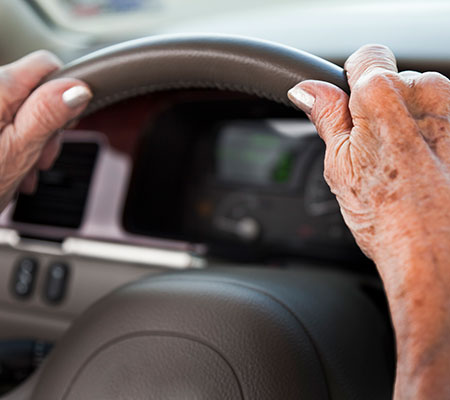For many, driving means a sense of independence and ease to get from one place to another. However, as we get older, we become less alert when it comes to driving. At some point, many people need to turn over driving to someone else.
Having that conversation with a loved one is not easy, but there are ways to approach it. Here are some ways to determine when they should stop driving, when and how to have the conversation and what the next steps are to help them get around.

Signs to stop driving
According to Thomas Gabert, M.D., a Marshfield Clinic internist, driving skills for everyone decline as your senses decline. The most prominent are vision, hearing and overall reaction time.
“Patients try to compensate by driving slower,” Dr. Gabert said. “But when their driving is so slow or erratic because they’re nervous about their reaction time, it is time to have the conversation about not driving anymore.”
Family and friends of the person should pay attention to their loved one’s driving. The decline happens over time, not suddenly. Family also should understand driving gives elderly patients a feeling of independence, and not driving may come with a fear of depending on others. Patients also can have a fear of being a burden and imposing on other people.
When to have the conversation
Dr. Gabert says it is better to have the conversation early and talk about other ways for the patient to get around or have other services brought into the home.
Family members should have the conversation a year or two earlier than when their loved one actually stops driving. Express concerns about them maintaining independence, and more importantly about their safety. Older drivers have thought about everything their family is worried about, so it is not a surprise to them.
“If you do the conversation early, they have time to prepare for the transition,” Dr. Gabert said. “It is a difficult conversation because the majority of patients who don’t live in a community with public transportation do not have another alternative. So it is best to plan ahead.”
How to plan
First, have a family member plan out their own week without access to their car. This will get them thinking about how they would get around without a car. This allows the family member to visualize or see the ways their loved one needs to be assisted.
Major tasks include getting groceries, social interactions, or just getting out on Sunday afternoon. Families should plan formally by listing and assigning tasks to certain family members, or looking at other alternatives such as public transportation.
Dr. Gabert says there is no specific age when a loved one should stop driving; it depends on the person.
“I have had patients with vision problems who stop driving in their early sixties,” Dr. Gabert said. “I also have drivers in their early nineties. But those are individuals who are careful to pick less congested roads on clear days and stay home if the weather is bad or don’t have to go out at night.”
Family members don’t have to have the conversation alone. They can compare notes with friends and family, or talk to their loved one’s physician or primary care team for help.






Leave a Reply